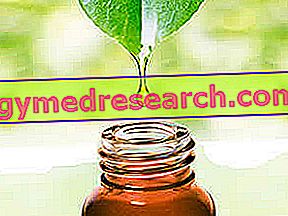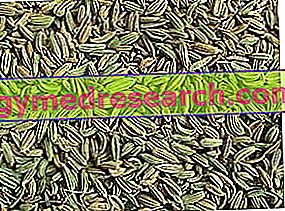
Pharmacotherapeutic actions attributed to aromatherapy
- digestive system
- cardio-circulatory system
- nervous system
- endocrine system
- immune system
- pulmonary apparatus
- urinary tract
- antitoxic action
- cytophilactic action
- high transcutaneous penetration power
- bactericidal and / or bacteriostatic action
The use of essential oils and the knowledge of distillation techniques are very ancient because they date back, perhaps, to 4000 years ago.

Essential oils perform multi-purpose therapeutic activities, whose mechanisms of action, due to their complexity, but also to the scarcity of scholars dedicated to this branch of research, are not always clear and uniquely identified. However it can be said that the odorous products of aromatic plants influence all the organic systems, with an action of strengthening of the vital functions; but alongside this non-specific activity of metabolic equilibrium there are others, characteristic of their specific tropism towards an organ, a system or an apparatus.
If essential oils act on biological functions they certainly do not leave the psychic ones intact. In reality they produce somatopsychic effects that will be better explained later, because they act both on the soma and on the faculties of the mind. Here we will describe some of the most important pharmacotherapeutic actions of essential oils, however we must keep in mind that these are always integrated, never isolated or limited to a function or an organ, as might appear from the following schematization, adopted for the sole purpose of achieving a certain clarity of exposition. The chemical constituents of the essences, their smell, their taste, acting individually or in synergy, always determine a global action that involves the psychosomatic unity of man.
Action on the digestive system : the gastro-intestinal tract and the attached glands are clearly influenced by essential oils. The most striking properties of these aromatic mixtures, their smell and taste, stimulate by reflex, through the solicitation of the nerve endings of gustatory receptors (palate and tongue) and olfactory (nasal mucosa), salivary, gastric and enteric secretions, improving the digestion process. When they are administered internally they also act with a glandular mechanism, following a direct stimulation of the secreting gastric glands. But other actions are of considerable importance: the antispasmodic one on smooth muscles (Basil, Bergamot, Chamomile, Cinnamon, Cardamom, Fennel, Lavender, Marjoram, Lemon Balm, Peppermint, Rosemary, Sage), the antifermentative one, the antacid one (Chiodi di Garofano) and the carminative one. Some essential oils are characterized by a unique tropism on the endocrine pacreas (Eucalyptus, Geranium, Juniper) and on the liver (Rosemary, Juniper, Lavender, Chamomile, Mint, Cypress).
Action on the cardiovascular system : even the heart and vessels are sensitive to the properties of essential oils. Camphor stimulates the heart muscle while Melissa, Arancio fiori, Lavanda, Rosmarino and Ylang-Ylang slow down the exaggerated heart rate, as occurs in palpitations. The diameter of the vessels can be modified causing hypotension (Hyssop, Lavender, Marjoram, Garlic, Lemon Balm, Sage, Ylang-Ylang) or hypertension (Camphor, Rosemary, Cypress, Thyme) with muscular and / or nervous mechanisms.
Action on the nervous system : many essential oils manifest a clear neurotropism both towards the central nervous system (CNS) and towards the autonomous one. The Oregano, the Rosemary, the Verbena and the Garofano exert a parasympathomimetic action, the Thyme, the Serpillo, the Hyssop, the Cypress and the Estragone a parasympathetic activity; Lavender, Angelica and Ylang-Ylang have a sympatholytic action, while savory, basil, pine and lemon have a sympathomimetic action.
In relation to the CNS, some authors classify essential oils in four basic classes: convulsive essential oils (Salvia, Tansy, Thuja, Absinthe, Anise), excit-narcotic, narcotic (Nutmeg, Mint) and anticonvulsants (Calamus, Salvia sclarea, Lavender). The group of excito-narcotics essential oils is in turn divided into predominantly stimulating essences (Basil, Fennel, Lemon, Mint, Sage, Thyme) and predominantly sedative or sedative essences (Chamomile, Lavender, Marjoram, Melissa, Verbena). It must however be remembered that the boundaries between sedative and stimulating action are never clear, so much so that many essential oils show a calming activity in small doses and an exciting one for higher doses. If the essential oils influence the SN and the psychic state through the humoral way, an equal effect can be achieved through the sense of smell, exploiting the smell that emanates. The upper portion of the nasal cavity is covered by the nerve endings of the bipolar olfactory cells immersed in the mucosa. The chemical energy connected with the odorous stimulus is converted by the chemoreceptors into an electrical impulse which, flowing into the olfactory nerve, stimulates the olfactory centers of the thalamus, the bulb and the telencephalon. In this way the simple smell of essential oils is able to condition the thymic state, ie the mood swings, and the nervous system. Some authors have emphasized the influence of the odorous characteristics of essences on the nervous system, verifying their neurocalming properties (anxiolytic essential oils) and neurostimulants (antidepressant essential oils) even when they are administered by inhalation or by olfactory aspiration (sniffing). In this case, it is a true endonasal reflex-therapy, based on the stimulation of olfactory chemoreceptors by the odorous substances contained in essential oils.
action on the endocrine system : the essential oils, regardless of the content in substances similar to others, characteristic of some of them, behave like plant hormones (phyto-hormones). Present in the circulatory stream in concentrations that are always very low (the average dose per mouth is 2-5 drops, which diluted in 5 liters of blood gives a blood concentration of 10-5M), they reach the specific tissues regulating the metabolic activity and growth, therefore acting as important regulatory factors. Their stimulating or inhibiting action on some endocrine glands is clearly demonstrated: Basil, Pine, Savory, Thyme, Geranium and Rosemary stimulate the adrenal cortex, while Mint and Jasmine activate the secretion of pituitary hormones. For other glands there is no experimental evidence, however clinical observation leads to say that all endocrine glands are influenced by essential oils through their hormone-like activity. Ultimately it can be said that their ability to modulate the functional state of the neuro-endocrine system, the cornerstone of homeostatic regulation, makes essential oils one of the most powerful tools with which it is possible to achieve organic rebalancing.
Action on the immune system : the diseases with bacterial etiology that affect humans have become very numerous and the list of bacteria cataloged by microbiologists is growing more and more because they are considered guilty of being the cause of some new morbid disease. However, bacterial disease is never the immediate effect of the pathogenicity of a bacterium, but the result of two mutually interacting terms: the natural immunological defenses of each of us and the virulence of the microbe. This statement is perfectly in agreement with the fact that not everyone succumbs to an epidemic. Although we do not know the mechanism of action, some essential oils (Bergamot, Lavender, Chamomile, Thyme, Pine, Sandalwood) have the power to stimulate the production of immune lymphocytes, making the organism more ready to repel bacterial aggressions .
Action on the pulmonary apparatus: most essential oils are eliminated, in greater or lesser amounts, through the respiratory tree at the level of which they exert an antiseptic, antispastic action (Fennel, Peppermint, Thyme, Sage, Eucalyptus, Lavender), expectorant (Garlic, Camphor, Basil, Eucalyptus, Marjoram, Oregano, Savory, Fennel, Hyssop, Mint, Sandalwood) and stimulant of respiratory acts (Camphor).
Action on the urinary system : essential oils are eliminated through the skin, the lungs and, above all, the renal route. Many constituents of the essential oils being removed exert a diuretic action (Garlic, Green anise, Birch, Chamomile, Onion, Cypress, Juniper, Eucalyptus, Geranium, Hyssop, Lavender, Lemon, Rosemary, Sandalwood, Thyme), antilithiasis (Chamomile, Geranium, Juniper, lime, Fennel) and antiseptic. The diuretic action of essential oils can be the effect of an influence on the ultrafiltration process that occurs in the glomerulus or the consequence of a modest irritation of the renal epithelium induced by the constituents of the essence.
Antitoxic action : according to Valnet, the high resistivity of essential oils (from 2000 to 4000 ohm / cm / cm2) compared to that of blood (200 ohm / cm / cm2) is able to hinder the spread of toxins. It seems more likely, however, that the antitoxic action is expressed through an enhancement of the "therapeutic leukocytosis" or by the uptake of circulating toxins by the aromatic molecules and the formation of non-toxic and inactive complexes.
Cytophylactic action : the essential oils, acting as phyto-hormones, stimulate the senescent tissues, stimulating the cellular anabolic processes.
High transcutaneous penetration power : essential oils have strong lipophilic characteristics that make them soluble in skin lipids. The absorption rate via the skin is 20 minutes for turpentine, 20-40 minutes for thyme and eucalyptus, 40-60 minutes for bergamot, lemon, anise and fennel, 6 to 80 minutes for Geranium and Cinnamon. According to P. Rovesti the essential oils of citrus fruits are absorbed in times varying from 10 to 30 minutes in the presence of the massage. This property can be exploited:
- to act on the deep and underlying organs of the point of application;
- to convey other active substances (alkaloids, glucosides, etc.);
- to have systemic effects. In fact, once the cutaneous barrier has been overcome, the essential oil propagates by diffusion in the extracellular liquids, to reach the blood and the lymph. With the humoral transport they finally reach the tissues and the different organs, which retain the essential oils in relation to the tropism which is their own.
- bactericidal and / or bacteriostatic action: the antimicrobial fight with natural medicines has rediscovered in the essential oils of therapeutic aids of all respect for their high bactericidal and / or bacteriostatic power, that is for their unequivocal ability to kill pathogenic bacteria or to inhibit their multiplication without interfering negatively, when they are administered internally, with the saprophytic and symbiotic flora of the intestine.



